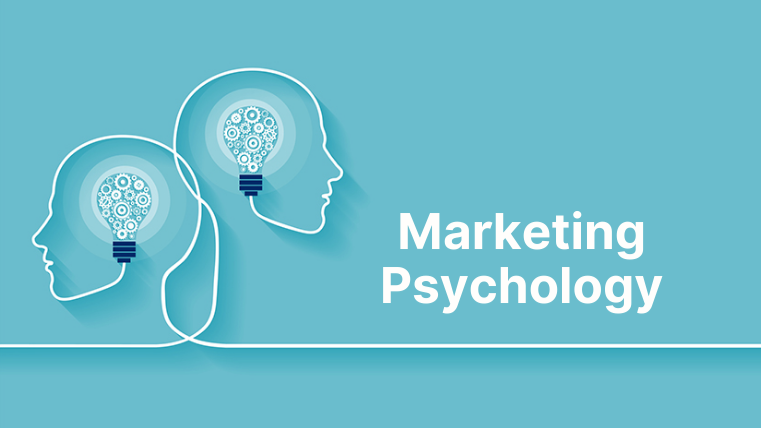Psychology isn’t just about understanding people; it’s also about influencing decisions. While it’s often linked to counseling or research, many of its insights can boost marketing and advertising efforts. By applying psychological principles, businesses can more effectively engage their audience, foster trust, and create campaigns that deliver tangible results.
Why Psychology Matters in Marketing?
Marketing has evolved from the days of street vendors to today’s sophisticated online strategies or deep technology innovations. Despite the changes in technology and platforms, human behavior has remained constant in many respects. Psychological understanding is key to standing out and connecting with potential customers in a market crowded with ads and short attention spans.
Below are several psychological strategies known to work in marketing. They can guide you in designing campaigns that truly resonate with your audience. I have always believed that I am great in Marketing / Sales and the results that I am able to bring not just for the things that I take up, but also for the clients I work with as their Outsourced CMO (Chief Marketing Officer) but I went deep into the topic of why Marketing is such a passion for me & a sector agnostic talent, I realised, that it is more because I understand people really well. I am not just marketing, but I am marketing through the knowledge of end customer’s behaviour and mindset, hence this deep dive article on psychology for Marketing, in my own way through knowledge and information gained through years and years of experience and bit of reading into the topic to connect the dots.
Building Trust Through Others
People look to the experiences of others to inform their own decisions. Testimonials, reviews, or case studies can reassure new customers that they’re making a wise choice. Whether featuring user-generated content or displaying real success stories, showing other people’s positive experiences can lead prospective customers to trust your brand.
How to apply it:
• Encourage satisfied customers to leave reviews on your product pages.
• Showcase authentic testimonials and star ratings in your advertising materials.
• Use visuals (such as photos or videos) of customers enjoying your product or service.
Familiarity Wins
The more frequently people see your brand, the more they tend to prefer it. By repeatedly exposing potential customers to your logo, tagline, or ads, your brand feels more familiar and comfortable.
How to apply it:
• Use remarketing campaigns that show relevant ads to users who have visited your website.
• Maintain consistent branding—colors, fonts, tone—across social media, email, and print.
• Run strategic ad placements on platforms where your audience spends time.
Setting Perceptions of Value
Anchoring means that the first piece of information people see (often a high or low price) strongly influences how they perceive subsequent information.
For example, presenting a higher-priced option first can make a slightly lower-priced item look like a bargain.
How to apply it:
• If you have multiple subscription tiers or categories, list the highest-priced option first to make mid-tier plans seem more appealing.
• Show the “original price” and “discounted price” side by side, using the original price as an anchor.
• Include comparative pricing on your landing pages so visitors can quickly see how your products compare in value.
Tapping Into the Fear of Missing Out
People generally dislike losing more than they like winning. This can inspire them to act quickly, especially if they perceive a risk of missing out on an opportunity.
How to apply it:
• Highlight limited-time offers, emphasizing that they expire soon.
• Promote words like “don’t miss out” or “avoid losing this deal” to create a sense of urgency.
• Send reminder emails before a sale ends, underscoring what customers will lose if they delay.
Guiding Choices Subtly
By introducing a third, less attractive option, you can steer customers toward the choice you want them to make. Placing a “decoy” price point or package can make your preferred option look more favorable.
How to apply it:
• Offer three tiers / categories of a product or service (basic, standard, premium), making the standard tier / category clearly the best value.
• Display a product bundle that is only slightly less cost-effective, nudging users to pick the more appealing, higher-priced bundle.
• When showing shipping options, you can include a slow free option, a mid-priced standard option, and a premium expedited tier / category that helps anchor the mid-tier / category as the “reasonable” choice.
Confidence Creates Trust
This shows that people tend to live up to higher expectations. Customers may feel more assured about your capabilities if your brand appears confident—through bold messaging, strong visuals, and consistent communication.
How to apply it:
• Emphasize your core values and mission across every channel so that employees and customers know your standards.
• Show confidence in your product’s benefits and capabilities through endorsements, demos, and transparent success stories.
• Maintain a clear, uplifting brand voice that signals you expect positive outcomes for anyone who works with or buys from you.
Sparking Curiosity
When people realize they don’t know something they believe is essential, they often seek more information. Teasing your audience with just enough detail can encourage clicks and sign-ups for your products / services.
How to apply it:
• Create headlines like “3 Secrets for Better Skin” or “The One Trick Every Fitness Pro Uses.” Make sure you deliver on these hints in the content.
• Use short, direct calls to action that promise answers or insider knowledge, such as “Get the Checklist” or “Discover How It Works.”
• Avoid clickbait. If you claim to reveal a secret, provide meaningful content that keeps your audience’s trust.
Keep It Simple
Most people only remember the gist of what you say, not every detail. This effect encourages you to deliver concise, easy-to-understand messages.
How to apply it:
• Use short paragraphs, bullet points, and simple language in emails and landing pages.
• Make headlines big and bold so the primary message is quickly grasped.
• Focus on one main idea per ad or call-to-action to avoid overwhelming your audience.
Avoid Overwhelm
When people are presented with too many options, they can freeze and make no choice at all. Offering a carefully curated set of options is more likely to lead to a confident purchase decision.
How to apply it:
• Limit the number of products on a single page or group them into easy-to-browse categories.
• For subscription, product versions or services, consider offering two or three tiers to prevent confusion.
• Provide product recommendations based on the user’s browsing or purchase history so they see the most relevant items first.
Small Steps Lead to Big Wins
If you can get a potential buyer to take a small action—such as downloading a free guide or signing up for a newsletter—they are more likely to make bigger commitments later on.
How to apply it:
• Offer free trials/ demo, samples, or mini consults to help customers start small.
• Use a simple “Book a quick 15-minute call” approach for your service.
• Send drip campaigns that gradually introduce more features or offers as people engage.
Personalization and Consistency Are Key
In addition to individual principles, remember that modern consumers expect personalized experiences. Tailor your messaging or offers to reflect their history with your brand or specific needs. Also, ensure your marketing voice and style are consistent across social media, email newsletters, and your website. That consistency helps people know what to expect, reinforcing trust over time.
Applying Psychology Ethically in Your Marketing
Putting these psychological insights into practice can give your marketing efforts a powerful edge. However, it’s essential to use them responsibly:
• Offer real value rather than trying to trick or manipulate.
• Be transparent about time-limited deals or scarce inventory.
• Deliver on promises made in your headlines or calls to action.
When used with integrity, psychology-based strategies can improve your marketing results and help customers make decisions that truly benefit them.
By focusing on genuine connections and clear communication, you pave the way for trust, loyalty, and sustainable growth in your business.
Do share your thoughts, lessons, learnings in comments & if you wanna meet for a cuppa, lets block our calendars…


Leave a Reply